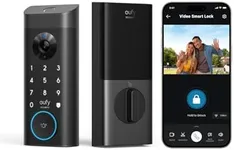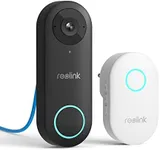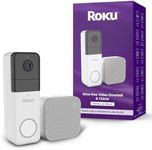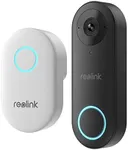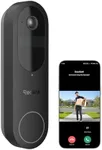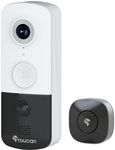Buying Guide for the Best Google Home Compatible Doorbell
Choosing a Google Home compatible doorbell involves understanding the key features that will ensure it meets your needs and integrates seamlessly with your smart home setup. It's important to consider factors such as video quality, field of view, connectivity, power options, and additional features like motion detection and two-way audio. By evaluating these specifications, you can select a doorbell that provides security, convenience, and compatibility with your existing devices.Video QualityVideo quality determines how clear and detailed the footage from your doorbell camera will be. This is important for identifying visitors and monitoring your home's entrance. Video quality is typically measured in resolution, such as 720p, 1080p, or 4K. Higher resolutions provide clearer images but may require more bandwidth and storage. For most users, 1080p is a good balance between clarity and resource usage. If you need very detailed footage, consider a 4K option.
Field of ViewThe field of view (FOV) indicates how wide the camera can see. A wider FOV allows you to capture more of the area in front of your door, which is useful for monitoring larger spaces or seeing visitors approaching from the sides. FOV is measured in degrees, with common values ranging from 90 to 180 degrees. For most homes, a FOV of 120 to 160 degrees is sufficient to cover the entrance area effectively.
ConnectivityConnectivity refers to how the doorbell connects to your home network and other devices. Most smart doorbells use Wi-Fi, but some may also offer Ethernet connections for more stable performance. Ensure the doorbell supports your Wi-Fi network (2.4GHz or 5GHz) and check for compatibility with Google Home. Reliable connectivity is crucial for real-time notifications and video streaming. If you have a strong Wi-Fi signal at your door, a Wi-Fi doorbell will work well. Otherwise, consider options to boost your signal or use a wired connection.
Power OptionsPower options determine how the doorbell is powered. Some doorbells are battery-operated, while others require a wired connection to your home's electrical system. Battery-operated doorbells are easier to install and can be placed anywhere, but they require regular recharging or battery replacement. Wired doorbells offer continuous power but may require professional installation. Choose a power option based on your preference for ease of installation and maintenance.
Motion DetectionMotion detection allows the doorbell to alert you when someone approaches your door, even if they don't ring the bell. This feature is important for security and convenience. Motion detection can vary in sensitivity and range, and some models offer advanced features like person detection to reduce false alerts. Consider your security needs and the typical activity around your entrance when choosing a doorbell with motion detection capabilities.
Two-Way AudioTwo-way audio enables you to communicate with visitors through the doorbell using your smartphone or smart speaker. This feature is useful for greeting guests, giving instructions to delivery personnel, or deterring potential intruders. Ensure the doorbell has clear audio quality and minimal delay for effective communication. If you frequently interact with visitors remotely, prioritize a doorbell with reliable two-way audio.
Night VisionNight vision allows the doorbell to capture clear video footage in low-light or dark conditions. This is important for monitoring your entrance at night or in poorly lit areas. Night vision capabilities can vary, with some models offering color night vision or infrared LEDs for better visibility. If you need to monitor your entrance 24/7, choose a doorbell with strong night vision performance.

